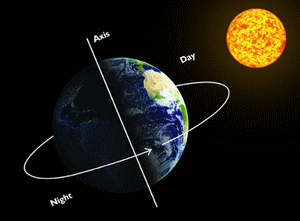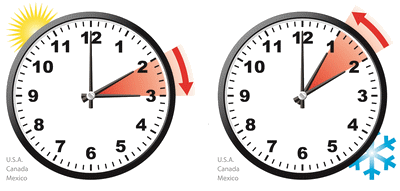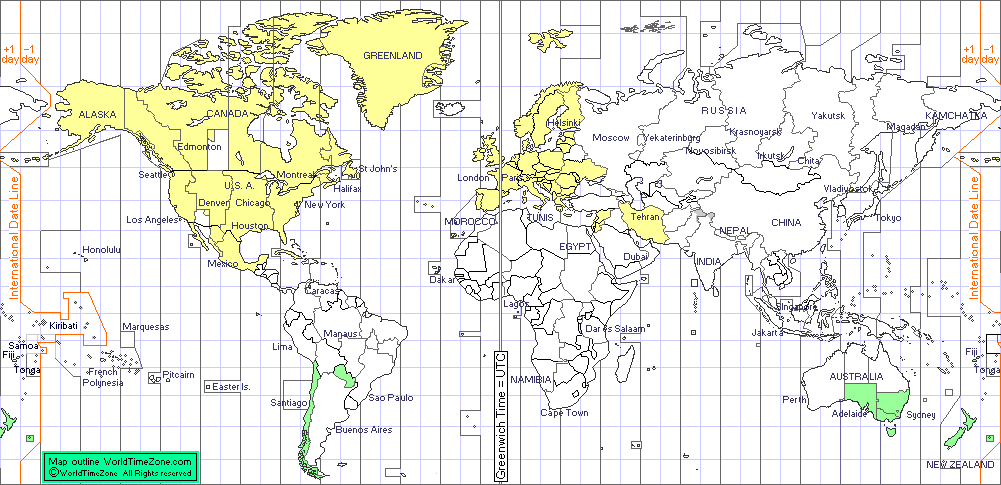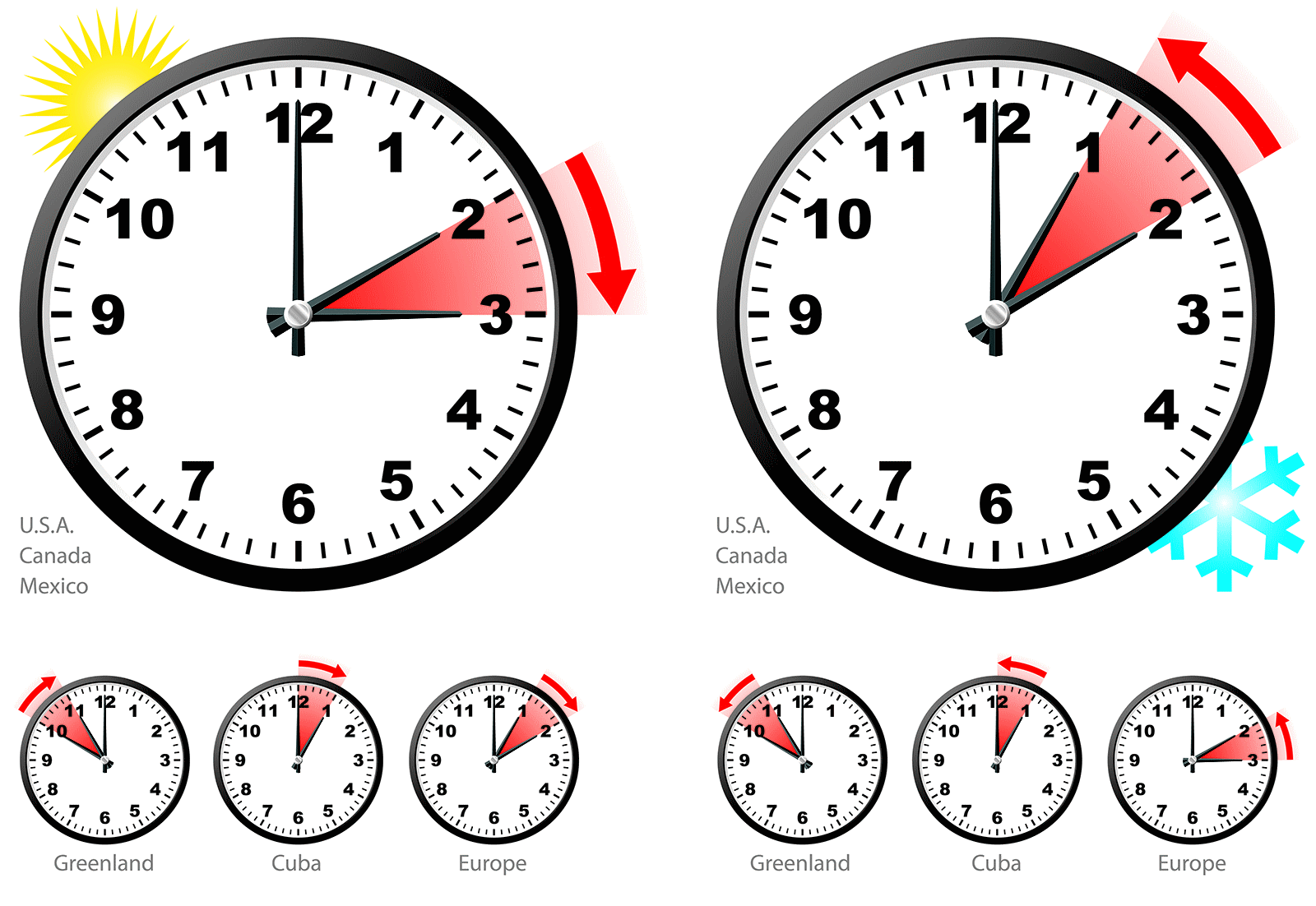What is Daylight Saving Time (DST)?
1. What is DST?
Normally, you can feel the sunlight from 4 am to 7 pm. The rest of the time, it's dark and people rest or sleep. It is common for people to go to bed at 12 am and wake up at 6 am. If things go on like this, there's nothing to talk about.


Almost everywhere in the world, in summer you feel the day longer, the dawn comes earlier, you feel the sunlight from 3 am to 9 pm everyday. However, the habit of most people is the same, sleeping at 12 am and getting up at 6 am.
Our earth revolves around the sun and rotates on its axis. In summer, in some parts of the earth such as some parts of the United States and Canada, you can clearly feel the dawn starting at 2 am. This time people are still sleeping and they only wake up in 4 hours.

The story began in 1907. An English builder named William Willet, during an early morning horseback ride, noticed that all the houses were tightly closed and everyone was asleep although the sun had risen, and he felt that daylight was being wasted.
His idea at the time was how about people went to bed earlier at 11 pm the day before and woke up at 5 am the next day. Or alternatively, in spring and summer everyone should turn their clocks 1 hour faster, and he called it "Daylight Saving Time - DST". 12 am and 6 am in DST correspond to 11pm and 5 am in standard time. By the trick of the clocks, people keep their habits while saving daylight time.
Willet spent a small fortune lobbying businessmen, members of Congress, and the United States Congress to get his ideas realized. But his proposal was met with ridicule for the most part. One community opposes it for moral reasons, calling it the crime of "lying" about real-time.
2. War changed everything
Attitudes changed after World War I broke out. The government and citizenry recognized the need to conserve coal used for heating homes. The Germans were the first to officially adopt the light-extending system in 1915, as a fuel-saving measure during World War I. This led to the introduction in 1916 of British Summer Time: From May 21 to October 1, clocks in Britain were put an hour ahead.
Despite major opposition from the public, the matter was eventually brought to parliament. In 1918, DST was tested in the United States. Two o'clock in the morning of March 31, 1918, all of the clocks in the United States were advanced an hour. Canada also applied a similar policy at the end of that year.

Spring and summer, clocks in the US will be added one hour and set back in fall and winter.
However, in the United States the Daylight Saving Time experiment lasted only until 1920, when the law was repealed due to opposition from dairy farmers (cows don’t pay attention to clocks). No fewer than 28 bills to repeal Daylight Saving Time had been introduced to Congress, and the law was removed from the books.
The topic of DST was forgotten until America was dragged into World War II after the attack on Pearl Harbor. DST is now required to save energy.
Inconsistent adherence to time zones among the states created considerable confusion with interstate bus and train service. To remedy the situation, Congress passed the Uniform Time Act in 1966, establishing consistent use of Daylight Saving Time within the United States: Clocks were to be set ahead one hour on the last Sunday in April and one hour back on the last Sunday in October.
In 1986, the U.S. Congress approved a bill to increase the period of Daylight Saving Time, moving the start to the first Sunday in April. The goal was to conserve oil used for generating electricity—an estimated 300,000 barrels annually. (In 2005, the entire state of Indiana became the 48th state to observe Daylight Saving Time.)
The rules for DST changed in 2007 for the first time in more than 20 years. The new changes were enacted by the Energy Policy Act of 2005, which extended the length of DST in the interest of reducing energy consumption. The rules increased the duration of DST by about one month. DST is now in effect for 238 days, or about 65% of the year, although US Congress retained the right to revert to the prior law should the change prove unpopular or if energy savings are not significant.
Currently in the US, DST starts on the second Sunday of March and ends on the first Sunday of November. It is applicable to most US states.
Hawaii and Arizona are the only two states in the U.S. that do not observe daylight savings time. However, several overseas territories do not observe daylight savings time. Those territories include American Samoa, Guam, Northern Mariana Islands, Puerto Rico, and the U.S. Virgin Islands.
The map below shows the regions of the world that use DST (Updated 2021).

DST start and end dates in the US and Europe (Except for a few US states that use standard time):
 United States |  European Union | ||||
Year | DST Begins at 2 a.m. | DST Ends at 2 a.m. |  | Summertime period begins at 1 a.m. UT | Summertime period ends at 1 a.m. UT |
2017 | March 12 | November 5 |  | March 26 | October 29 |
2018 | March 11 | November 4 |  | March 25 | October 28 |
2019 | March 10 | November 3 |  | March 31 | October 27 |
2020 | March 8 | November 1 |  | March 29 | October 25 |
2021 | March 14 | November 7 |  | March 28 | October 31 |
2022 | March 13 | November 6 |  | March 27 | October 30 |
2023 | March 12 | November 5 |  | March 26 | October 29 |
2024 |
March 10
|
November 3
|  |
March 31
|
October 27
|

DST start and end time also differ among countries.
Java Date Time Tutorials
- Java ZoneId Tutorial with Examples
- Java Temporal Tutorial with Examples
- Java Period Tutorial with Examples
- Java TemporalAdjusters Tutorial with Examples
- Java MinguoDate Tutorial with Examples
- Java TemporalAccessor Tutorial with Examples
- Java JapaneseEra Tutorial with Examples
- Java HijrahDate Tutorial with Examples
- Java Date Time Tutorial with Examples
- What is Daylight Saving Time (DST)?
- Java LocalDate Tutorial with Examples
- Java LocalTime Tutorial with Examples
- Java LocalDateTime Tutorial with Examples
- Java ZonedDateTime Tutorial with Examples
- Java JapaneseDate Tutorial with Examples
- Java Duration Tutorial with Examples
- Java TemporalQuery Tutorial with Examples
- Java TemporalAdjuster Tutorial with Examples
- Java ChronoUnit Tutorial with Examples
- Java TemporalQueries Tutorial with Examples
Show More